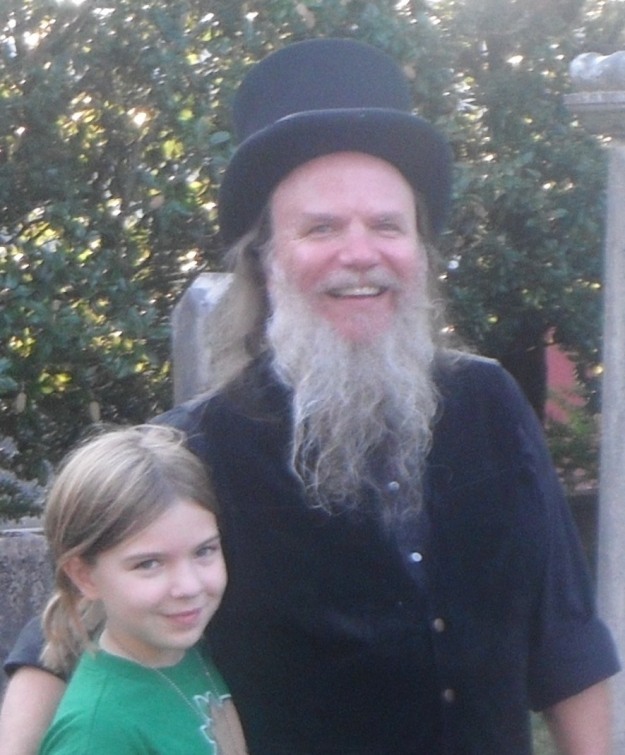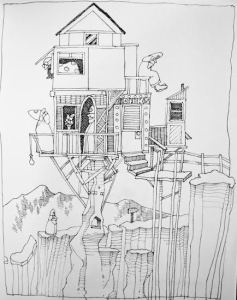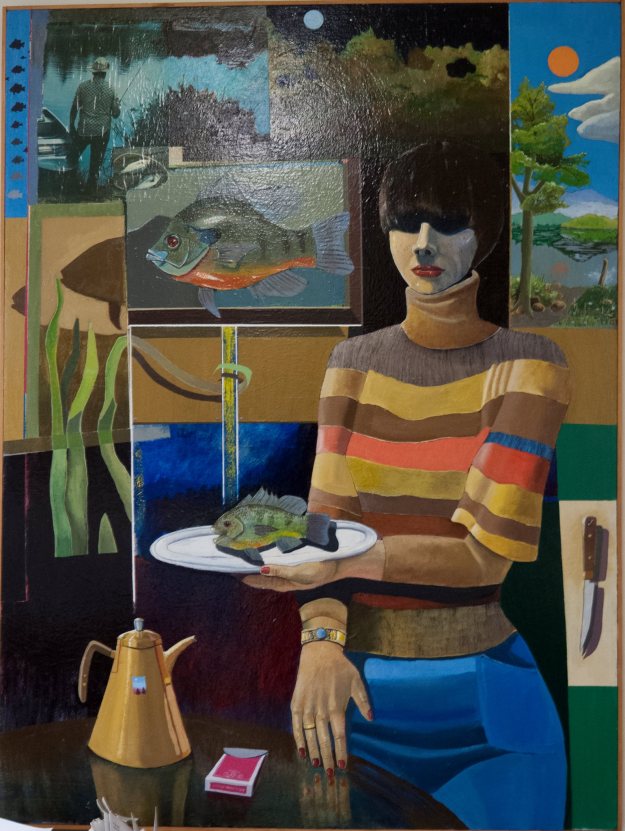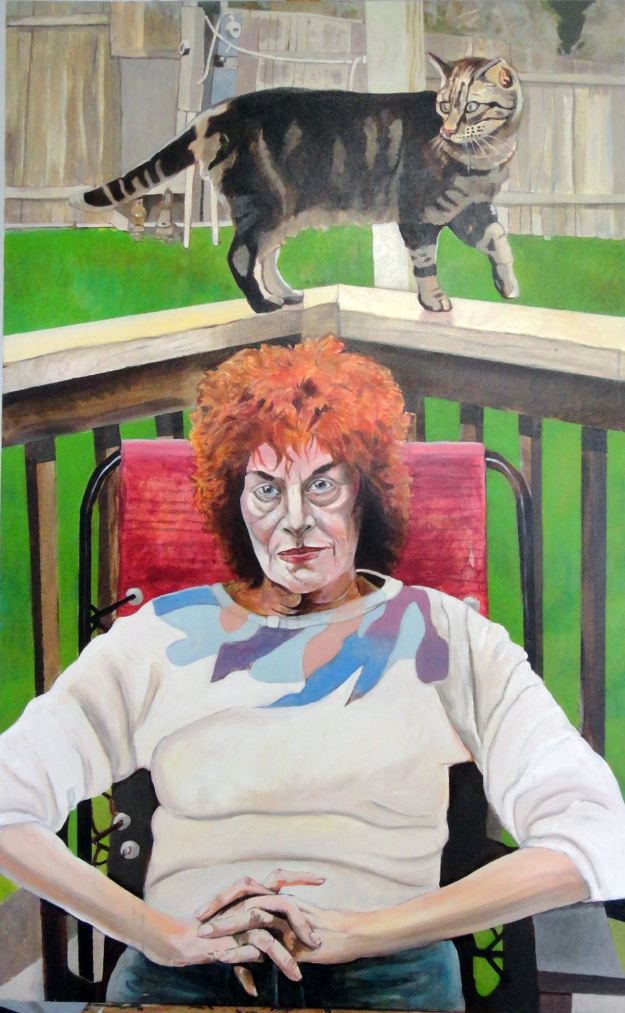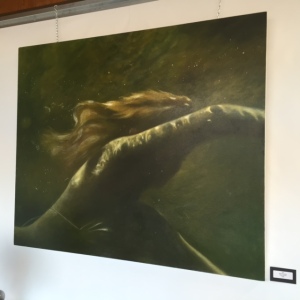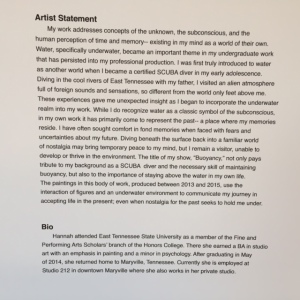
All of us at Broadway Studios and Gallery look forward to our May exhibit of Annamaria Gundlach, who lives in East Tennessee. She teaches art as an “outreach artist” at the Knoxville Museum of Art, and at the Knoxville Fine Arts & Crafts Center, (next door to our Gallery). As a scultptor, she has received many awards and grants, and exhibits in museums and fine arts exhibitions.
Her own words from her website describe her work best:
“Each of my clay sculptures has its own voice which speaks as I create it. As a figurative artist I’m fascinated by the female form and its impact on art and religion throughout history. Nature is my inspiration and my figures reflect sensuality, strength and connection to the earth.”
“I strive to create organic figures that exude natural elegance. I burnish and pit-fire my work so the smoke ages and mutes the colors with a patina that has a haunting suggestion of lost and forgotten eras. I refer to my work as “modern artifacts”.This oxymoron reflects my contradictory intent of modern elegance achieved with primitive methods and various surface enrichments that connect the past to present.”
I invite you to learn more about Annamaria Gundlach through the resources provided at the end of our conversation. Her enthusiasm for teaching art, for discovering history and beauty in nature, all seemed to just flow out of her, when we met at Broadway Studios and Gallery just recently. I hope that you will enjoy knowing a bit more about what motivates an artist, and this artist in particular, in the way she relays to us her passion for the creative.
A Conversation, which just begins:
I get my energy from people. So you must be a people person, because you teach… I love teaching children…I love their genuine enthusiasm. Any particular age? Oh no, all ages, and adults.
I will tell you an experience I had, just to give you an idea of what its like.. When I taught summer camp one time, there were triplets, and they must have been about 5 year old and they were split up. And the little girl was in my group and she was crying and very upset and we were doing colors. (And I teach basic art. I don’t dummy down to children). I only use primary colors and a little white….and they learn to mix colors, and so,she was crying I said to her, “Why don’t you find a color that will make you happy?” And she looked at me and said, “Sometimes things are so beautiful they can make you sad”..and I’m thinking oh my gosh, so I find I am learning from them as much as they learn from me. and they trust me and I’ll say, you know I’ve been doing this for a hundred years and fortunately they believe me! And once they trust me and I trust them. And so, art is a relationship. Well, even adults, especially people who in time have lost confidence, and I say this to everyone, I really don’t change things very much whether I teach children or adults.
What makes an artist different from someone who is not an artist? An artist does art and an artist’s focus is on art, and if you want to learn how to draw what do you do? You have just go around and learn to see, your hands are going to translate what you see. So you start drawing. Maybe initially it’s not going to be what you like, but as you see better and your depth perception and your perspective improves you start to see and then you say oh my gosh, I can draw, I really can draw, and then of course if you want to take classes and learn from people who are qualified to help you that’s even better, but artists do art in their thoughts and their minds and in art. That’s what they do, and that’s what I do. And and I’m always one of these people who when I see things sometimes I get a whole different idea…wow! look at that, or I can use that or I like that shape.
I saw a bear the other day, this plastic bear, and I said I love that, and I could see how I could abstract that into a sculpture, that …It’s just like it was this chotzky little thing, but I’m looking at it like I’m going to make that bear…and you’re not copying that, all you’re doing is like, it’s like seeing other artists work, of course you’re not going to copy it, but it’s like I love that style…that person is…we’re on the same wave length.
And you will find artists like that because there’s an artist, and I think her name is Anne Franck, People have sent me articles about her she’s an artist ..from the sixties…. She’s doing things, in some ways like I am. And I don’t know her. I never even saw her. She a sculptor, and she does very, uh, a lot of disconnected figures and very, very organic. And I love that theme of emergence, I love that subtlety of coming out, I just have always liked that. And I guess she had the same idea too. I think she was kind of like a hippie in the sixties.
As a child was art …big for you? Well, it was in the sense that I loved going to the Boston Museum, the Childrens Museum, where everything was small, and what I would do, (I came from a big family, a big crazy family), there were seven of us, and I would find a corner in the hallway, and I would do this outside too, I would find buttons and bottle caps and I would create these little worlds, and you’d find like weeds and make food out of it, and I loved these little, my little world, and I do find many times I do like doing assemblages and doing things like that. yeah, so I did and doing things like painting and drawing.
It’s pretty evident that as a child you were an artist, and that art was important to you. It was, and it was also a way of, for me, a way of probably escaping, you know, you could escape and… have your own world. Exactly. You were creating your own space. Exactly, its like this crazy Italian family, everybody screaming and yelling…
So you are not from here…I’m from Boston. I’ve been in East Tennessee for almost twenty one years and [prior to that] I went to Florida. I graduated from the University of of Florida and I did teach arts and crafts there and I learned clay from a Florida treasure, her name was Olive Scaret Briggs. And she was fabulous, because, see, I started in ceramics as a studio potter, you know, throwing, glazing, and firing. And I cannot speak for others but for me, where clay is a medium that involves chemistry, it involves, also architecture. And then you have the problem of firing, so, to me, I think you need to learn all the rules, really learn them, and I think this is true, probably for a lot of the arts; then you can break them, and you can say I know how to break them… and of course, I’m experimenting, but you still have that basic construct, so that its not all fluff and not all happenstance. It is still there is a planning, because the creative process is, actually, in many ways, a thinking process, an artist like me, I have to think about, like that bear, I’ve got to think about right now the shape of it what its going to… I already see what I think it’s going to look like and I have to figure out if I want it to to be big, how am I going to make it? And so it’s almost like making a structure and if it’s…it’s got to fit in a kiln, do I have to segment it?
Teaching is a big part of what I do, and and I do have to make things for teaching that are really doable for people and is in their comfort zone,and, and its fun anyway, and I love to see people succeed. And I’ll tell ya, sometimes, I’ll have a class and I can’t even tell if I made it or they made it, because they’ve really watched, and listened and observed. And you know, that’s great.
This show that you are bringing to us (at BSG), is it a retrospective? The title is “The Body as Art”, and some of it is new and some of it is a retrospective, which are pieces of my own, that I have just kept and have and they almost are kind of like as you evolve, as you say into different styles, but it’s quite a few torsos, and some more.
While I don’t feel it’s necessary here to write a whole biography of you now…what is important about you? I will say that I have gone to Italy quite a bit and I have very strong Italian heritage, so when I’m in Italy I have always been very …uh its like two worlds, one is of course, the Renaissance, and I love the beauty, but for me its the Etruscans, and actually, I was just I was in Italy about two months ago, and they’re really a mystery. They’re a group of people who came and have that ingenuity and they and they kept building on whenever invaders came, and what I love about them. There was always this elegance, this beauty, and so that’s why I call a lot of my work “modern artifacts,” because I love that referring to the past, because if we don’t see connections, it’s like, oh, we think like, oh, we’ve just invented the wheel… I don’t think so…..So you’ll have a torso without arms... oh yeah. There’s quite a lot of your art online, that I saw…and Etruscan art fascinates me too. I have been so influenced by art of the Mediterranean. Yes and so what happened one time was when we were in Italy, and this is very common, Italy has a law that if you build a building, and you find any artifacts, any any bones, you cannot remove them. So all of Italy and most of, I think, the world, you build on things, Or around them…Well, or on top of them, you build on top of them… when you go to Rome you’ll see why is the house up so high? The door?..and its because everything’s settled, and its because there were so many different civilizations, and they would re-use everything too, they would re-use the block ? And so I go in this bar and I noticed that we would walk in someplace and there were lights on and there was Plexiglas were walking on and there are bones, and shards of ceramics, and I loved it, I just loved it, and I just thought I’d never seen anything like this, and everybody’s drinking in the bar. and all, and yeah, it’s part of the life. I wish we did more things like that here too. I do too, how you treat the dead tells a lot about society.
But I do think…I don’t know what’s happening in terms of the people understanding that we build on, as we evolve as human beings and we owe a lot to the people who came before us, and I don’t care if it goes back to the Neanderthals, …and also it’s the ingenuity and the art, these people are in a cave and yet they feel the impetus to leave some incredible art. No one told them, God knows, they might have been exhausted from hunting, and gathering… You go to Lescault, and these places, you go, and its like this is, again I quote what I tell children, what makes us different from all the other animals is creativity, in the sense that we are given that gift to create, and to draw, to sculpt, to, to make buildings, to write….all the arts, dance.
And it’s the humanity, art has a humanity, it has a humanity, regardless.. you might say as harsh as it can be, and well, maybe that’s a side, if it gets people
e to think, or to react, or just to feel nice, I mean and it’s lovely if you can create something beautiful…there are all kinds of people, and everybody has their wants and likes.
Just outside of Lebanon, I saw cities built on top of each other at an archaeological dig…but the most fascinating thing I saw was a pottery egg with a hole broken through showing a human skeleton in the fetal position.
Well, that’s just like when I was in, San Vicenzo, we went to an Etruscan museum, and I asked them, because I do speak Italian, and they had glass during that time of the Etruscans, and the man said oh Si Senora, and they put the bodies in little boxes and cremated them but he had a little box and he had a lily flower made of that green kind of glass, and he said when someone died everybody would cry a tear into this little vial, and they would put that in with the body.
I thought it was so moving, it just shows you that we haven’t really changed.
Many people are not exposed to this kind of history, and the value of it.
It is perplexing, you worry a little bit, especially with art being played down, that people are not exposed to, and not having that opportunity…and this is one of my specialties, in arts integration, that you actually can teach many subjects through the arts, like I did with sculpture.
I had the the Civil War, I had children learn different figures, and look it up, but then they did a sculpture, and the sculpture they made inspired them. I did that, you know, with explorers, Pizarro and Cortes, and then when I did it with the American Revolution, also I told them, you know, you’re gonna love George Washington, and the thing of it is they even acted, they found what they thought was important rather than having the teacher have them read a book… they had to do research, and they learned so much through going into that character, and then of course, they also shared it, you know, you could learn from other classmates. Fascinating. This is the way I learn best…, same here.
I do not like this sitting down, I call it like “sausage learning”, just stuff, stuff, stuff, stuff. It’s just like when I teach color theory with little kids, and they’ll go, or I’ll go, “what happens if we do this or that, and I’ll say let’s try it and they’ll say what happens when you mix all the primary colors?” And they’ll try it, and they see for themselves, but the thing that’s the most exciting, and I can honestly say, I’ve taught thousands and thousands of children, I’ve been doing this in Florida, too. I’ve never seen two colors alike, and I cannot understand it and how you can give them all primaries and a little white, and how they can come up with so many different colors and approaches. Fascinating. It is. It’s exciting. They learn ratio, they learn what’s a stronger color just in mixing colors, they have to. And the way they do it is by hands on. I use Que Tips. I keep it very simple so that its not, like, “oh wash the brush!” And we do that too, at times, but just the basics and they love it. And I always send a lot of the paintings they do to the director, David Butler, (of the Knoxville Museum of Art), and I will say, “this is a future artist here,” and he is always amazed, always. He’ll bring flowers in and we’ll do a flower and we’ll talk about shape and how to look at things. Phenomenal.
What’s coming through to me about you is your love of art, the exchange of it and keeping it alive through history and human beings today, and filtering what you know…sharing what you know with people. Art is a living thing. It is, thank you. It is artifacts. It’s a living thing. It’s what you do today, and from what you are sharing with me from artifacts, from the earth.
Oh I love clay. I’ve written a whole, kind of a, I don’t know how to explain it now, because I haven’t completed it yet, but its about clay’s role in civilization, because of all your artifacts, it’s really evolving, it’s really clay. And for example, when I was in Greece, they have little potty seats made of clay, things they made with clay! It was phenomenal. Imagine they knew to do that! It was phenomenal. Clay has played a role in civilization from the amphora, which started trade when they could put oil in those, and rice then the big, huge beautiful planters of the Romans….and the masks, and so you look at clay, and then, if you want to go way, way back, what a difference! You’re eating uncooked food or whatever, and then someone (notices) finally some clay hardens and they see they can make cups harden and they can hull whole seeds in it, and clay as makeup. These women… gorgeous make up, Still used today… Yeah, and its used in a lot of art, painting, and mediums, for healing, yeah, so I do find that clay has so much to do with the past, and now, with rocket ships going up into space, so much of that is clay…because of the thermal shock…So, it’s really a fascinating, fascinating medium. But the best part is ..clay..you can play with it and if it doesn’t work you can scrunch it up into a ball again and try again. It’s a little more user-friendly, and it is fun, and it’s extremely tactile, and that’s the other thing…were losing this, this sense of touch. I make kids.. I teach clay, and make the kids close their eyes when they make this sphere. And I want it in their hands and they’ll go “why?” and I will tell them to touch this. Your hands are tools, and then I say you can feel, see if you can feel this, if it’s smooth and round… so there’s all this getting in touch with the medium, in touch with your senses, and getting centered. What could be more grounding than that, literally? Exactly.
Clay is that medium. I love it. I’m always pushing clay and I’ll go, “kids with clay are like peanut butter and jelly They just go together so well, good combinations!
Oh, I know the sky’s the limit with creativity and kids, and you must have so much fun. I use clay and I’ve taught very….people w terrible physical and mental disorders, and yet clay lets you be in that childlike (state) and the I’ve always used art, as a way, you know, for people to explore more their own senses, you know, their own thoughts, so it s a very, a great way to get people to relax, many people say it’s their way to relax, its their Prozac, or whatever, and I think that’s a compliment.
Your work that we will see at our gallery, is it all clay? No, I have some mixed media. I have some pieces where I do like assemblages, where I mix clay and glass and found art, and all that. I have some, it just depends, I have done paintings, My main thing is really clay. But your main ‘body’ of work is clay.
Yeah, and I don’t mind deconstructing and then reconstructing, and in fact, I’m doing more of that, and I find that’s a lot of fun, ’cause you know you always have to play and have fun with this. Its a discipline, there’s no question its a discipline. But on the other hand its not like a discipline like uh, its fun, its exciting. Yeah, and you play…and it’s fun, it looks good, yeah, and if it doesn’t work I’ll change it.
You have done art so much of your life...I have, yeah, and I’m not intimidated by it or I don’t really care, because when I’m with other artists and we have play days, and someone’s doing caustic and all that I’m at the point when I ll be the crazy one and ….experiment….You are not in competition… No!
I think some artists take themselves so seriously. Uh, that’s right, or they get in a rut, and they can’t kind of get out of it and they just want to let loose a little bit and try something else..and I expect, I mean, I respect…I have friends who do portraits, and they make a lot of money doing that, but I wonder, you know, sometimes, if you just have that other side to you when, now a lot of artists will tell me “I’m doing something so different from what I’m doing” and you do see, you see that resurgence in energy, this enthusiasm. It’s self-discovery… Yeah, and maybe the two worlds will come together, where they’ll let it merge, and they can loosen up a little bit but still keep that definite style that they have, because that’s one of the biggest things for an artist to have your style, where people will go that’s Andre Benoit, and that to me is a real compliment.
I have seen online, a bust, a head of a woman you have done that makes me think of how you make your mark in your art, and I really love it. Oh thank you, in fact, I studied with Peter Rubino, who is a very fine sculptor, and that was really interesting that he would have us start with the model first, and the model would move around to beautiful music, and the model would be very realistic and as we got along we became more and more abstract, because abstraction is nothing but knowing the real thing and finding that part of it. And I find more and more that I really love that, because to me, making things more and more realistic, I mean, we can get mannequins and things. So its like, that doesn’t interest me. I know. It’s why I’ve always loved Daumier, with his caricatures, in his little sculptures with figures in court, or something. Cartoon-like, with wonderful expressions! Like that woman’s head of yours I was talking about, and how you say you make it yours.
I’ve learned one thing. I try to share this with teachers who teach art. They have to realize that people, whether they are children or adults, many times don’t see what you are trying to have them see. They don’t see the same. Their perception is different. And many times and there’s a theory about artists, like Picasso, that maybe they had mono-vision, maybe they were just seeing from one eye, and so, how you see things will affect how you create your art. And so you have to find a way, when you teach, to allow people to have that part of their personality, to be integrated. So that it makes it their art, and also a reflection of who they are.
Thank you for the conversation, Annamaria. I’m glad it wasn’t so much the interview as just a conversation. I prefer a conversation.
Of course, where I live is incredibly beautiful. I’m really fortunate. You live near water.. I do. Near the foothills..Yes….Mountains are there, so if you can imagine, it is like the weather will determine….so maybe some mornings it will erase the mountains, It’s like a big smudge…other times it’s the snow, this white, or the clouds…or like if the sun is setting these golden beautiful rays come across. Its phenomenal. Its exquisite, and so I think that we need to be very careful. The aesthetic development. I’m very concerned because if you’re …I think it has to do with everything, because if you’re eating crap, your not going to know what its like to bite into a fresh apple in autumn, or, you know to cultivate a taste for fresh broccoli, if you’re used to eating McDonalds, and it’s salty …and that goes for watching a lot of TV or if you’re on computers a lot, so nature helps with spacial. To be outside…helps you develop your spacial. There”s a lot, you know, there is so much research done on what effects, what we see, and I call it the “aesthetic sensibility” of that which is around us. It is it’s own world…
We have these bluebirds; I have these birdhouses my students make and I’ve had them forever these bluebirds they just come all the time. In the winter time they come, you know, and they just come in to get warm. And somehow, it’s very funny, they can get eight or nine (inside a house) and the last one will keep its tail out…and its like, “no vacancy!”
I have a great respect for nature. I think that maybe our disconnect, for example, instinct, look at the example of the mother bird with her baby birds… Maybe we need to rely more on instincts sometimes and how we care for things.
I love rocks, and finding rocks, and like when I teach kids about fossils. When kids are bored we would look down and find fossils…and they know all the names, the dendrites, and we would find a lot of those, and little things kids got..collecting rocks and having so much fun, just doing that.
I think most everyone would agree that we could alleviate a lot of problems if we were more in touch with nature. Yeah, and that’s my church. It really is. And it’s a mystery and I like that mystery. I don’t understand everything…But living in East Tennessee, I think, is beautiful!
End
You are most welcome to visit our Gallery to see Annamaria Gundlach’s show this month of May at Broadway Studios and Gallery. We are open Thursdays through Saturdays from 11 am to 7 pm.
For more information about the artist, you can explore the resources listed below:
http://flyknoxville.com/tys/annamaria-gundlach/
http://tnartseducation.org/teaching-artist-roster/annamaria-gundlach/
http://artdeannamaria.weebly.com/
As always, thank you for your interest and support of the arts!!
Anne Ramsaur, BSG Artist and Blog Writer
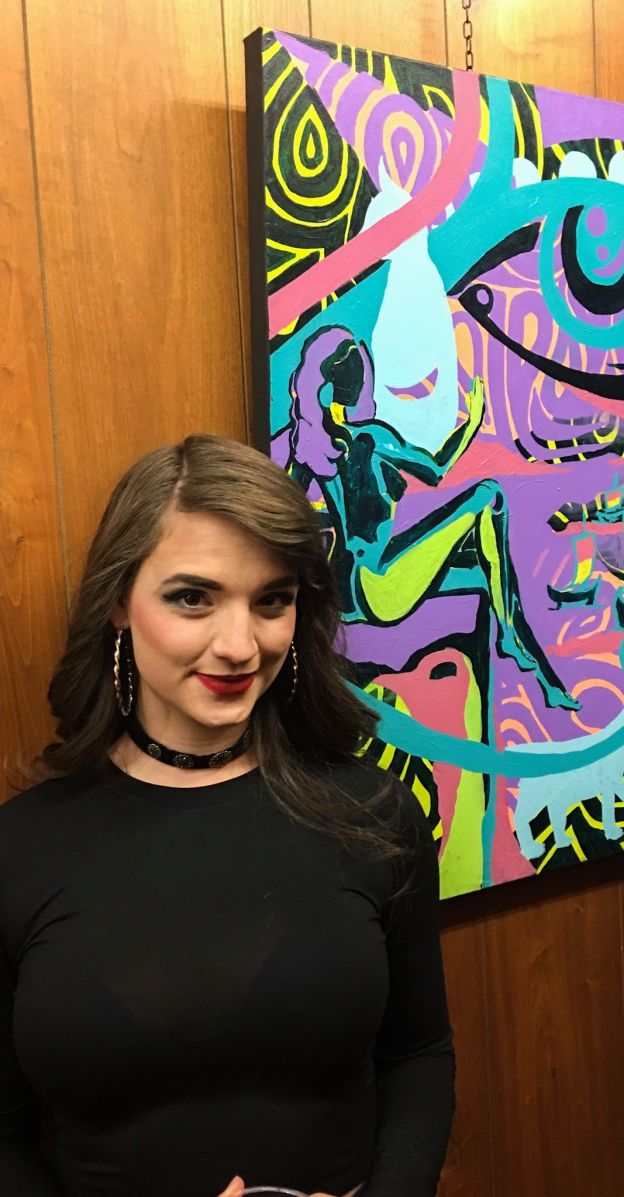

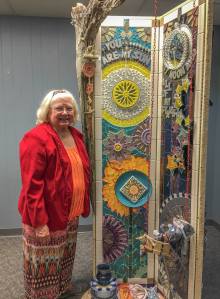
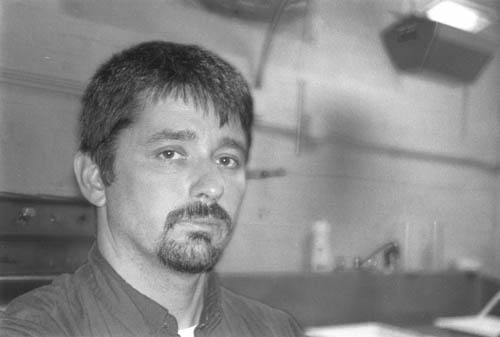
 I admire a photo of Al Gore. It’s very unassuming, seems candid. “He took quite a few of Al Gore. I liked the way he would put, uh, a lot of politicians next to drag queens and he called ‘political drag’, you know?”
I admire a photo of Al Gore. It’s very unassuming, seems candid. “He took quite a few of Al Gore. I liked the way he would put, uh, a lot of politicians next to drag queens and he called ‘political drag’, you know?”